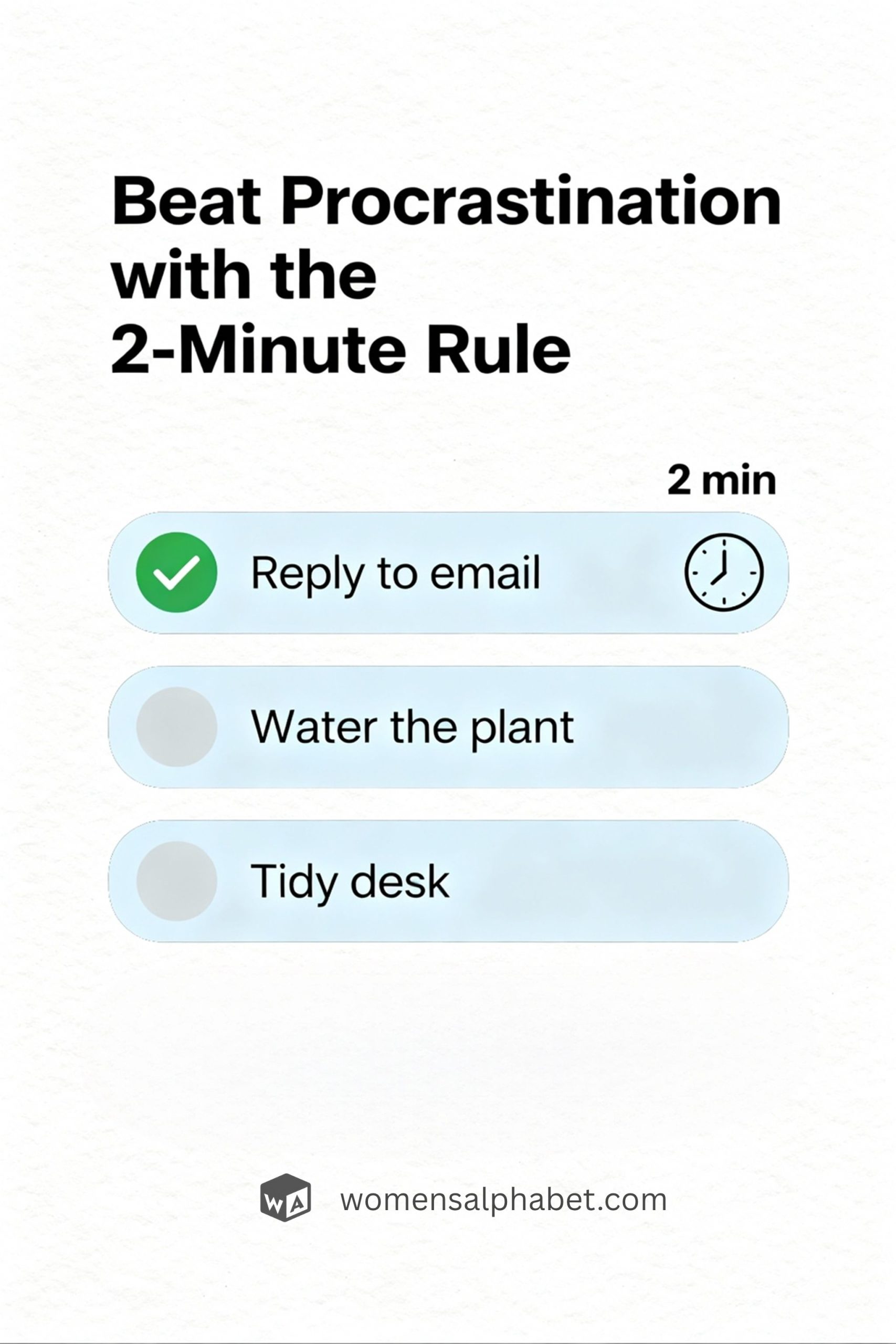We’ve all experienced it: the mental weight of unfinished tasks. It’s not the big, daunting projects that always weigh us down, but the swarm of tiny, seemingly insignificant chores. Putting away that one book. Replying to a simple text. Wiping down the kitchen counter. Each one is a small paper cut on our productivity, and together, they lead to a persistent feeling of being overwhelmed and behind.
What if there was a way to dismantle this cycle of procrastination with a principle so simple it feels almost too easy? There is. It’s called the “2-Minute Rule,” and it’s one of the most practical and transformative techniques for reclaiming your focus and building unstoppable momentum.
What is the 2-Minute Rule, and Where Does It Come From?
The concept was introduced to the mainstream by David Allen in his landmark productivity book, “Getting Things Done.” The rule itself is brilliantly simple:
If an action will take less than two minutes to complete, it should be done the moment it’s defined.
Instead of deferring, scheduling, or adding it to a to-do list, you perform the task immediately. This isn’t just about cleaning your desk; it’s a fundamental shift in how you process and execute small-scale responsibilities. It’s about developing a bias toward action.
The Psychology: Why This Simple Rule Has a Profound Impact
The true power of the 2-Minute Rule lies not in its simplicity, but in its deep understanding of human psychology and the barriers to action.
1. It Annihilates “Activation Energy”
Every task, no matter how small, requires a certain amount of initial energy to start—what physicists call “activation energy.” Procrastination is often just the result of this initial energy requirement feeling too high. The 2-Minute Rule lowers this barrier to almost zero. The mental effort required to decide to do the task later is often greater than the physical effort of just doing it now.
2. It Feeds Your Brain’s Reward System
Our brains are wired to feel good after completing a task. Each time you finish something, you get a small release of dopamine, a neurotransmitter associated with pleasure and motivation. By completing dozens of tiny tasks throughout the day, you are consistently giving yourself positive reinforcement. This forms a powerful feedback loop that builds momentum and makes it easier to tackle larger, more significant goals.
3. It Clears Your Mental RAM
Every unfinished task, promise, or idea is what psychologists call an “open loop.” These open loops occupy a portion of your working memory, like apps running in the background of your phone, draining its battery. By closing these small loops immediately, you free up significant cognitive resources, allowing for deeper focus, clearer thinking, and reduced stress.

How to Weave the 2-Minute Rule into Your Daily Life
Adopting this rule requires a conscious shift in awareness. Here’s how you can apply it in different areas of your life for maximum effect.
In Your Home Environment
Your physical space is often a reflection of your mental state. Use the rule to maintain order effortlessly.
- As you leave a room: Don’t just walk past the cushion that’s out of place. Take 10 seconds to fix it.
- After a meal: Instead of leaving a plate by the sink, rinse it and place it in the dishwasher. This single action prevents a dreaded pile-up.
- When you take off your shoes and coat: Don’t drop them by the door. Take the 30 seconds to put them where they belong.
In Your Digital Life
Digital clutter can be just as stressful as physical clutter. Tame your inbox and files with quick actions.
- Processing Email: If an email can be read and replied to (or deleted/archived) in under two minutes, handle it immediately. Don’t let it linger in your inbox.
- File Management: Just downloaded a document? Don’t leave it in your “Downloads” folder. Take 20 seconds to rename it properly and move it to the correct destination folder.
From a Simple Rule to a Productive Identity
The 2-Minute Rule is more than a productivity hack; it’s a tool for reshaping your identity. You stop being a person who “puts things off” and become a person who “gets things done.” This subtle but powerful shift in self-perception is the foundation of lasting change.
Start small. For the next hour, commit to following the rule without exception. Notice the immediate feeling of clarity and accomplishment. By consistently choosing action over delay, you’re not just managing your tasks—you’re mastering your own attention and building a more effective, peaceful, and productive life.


